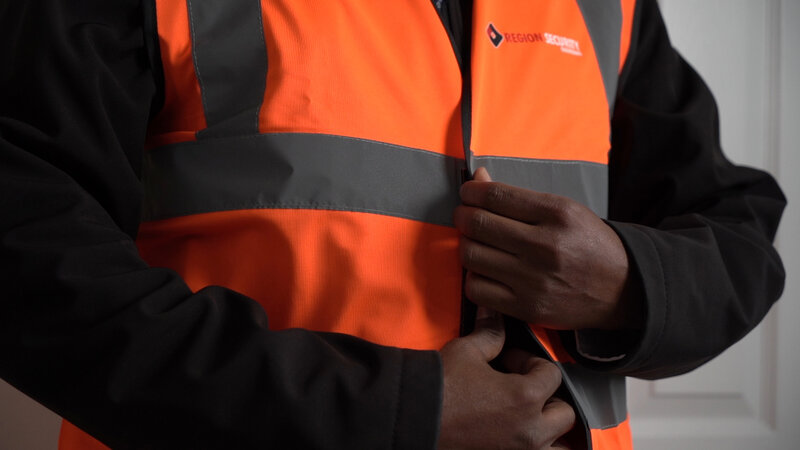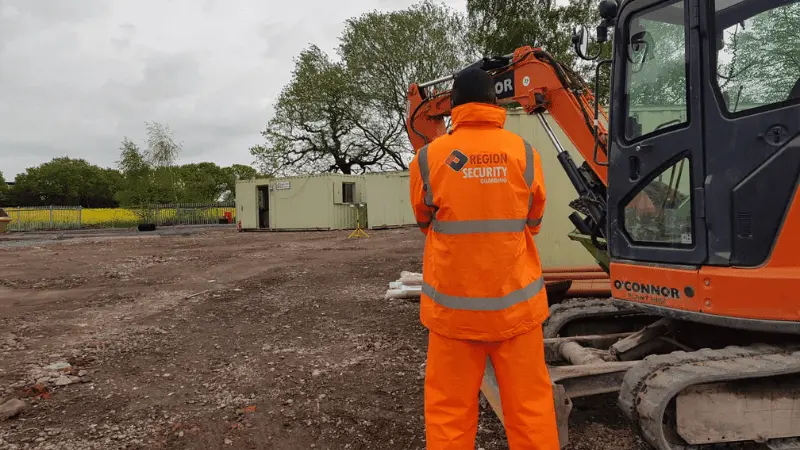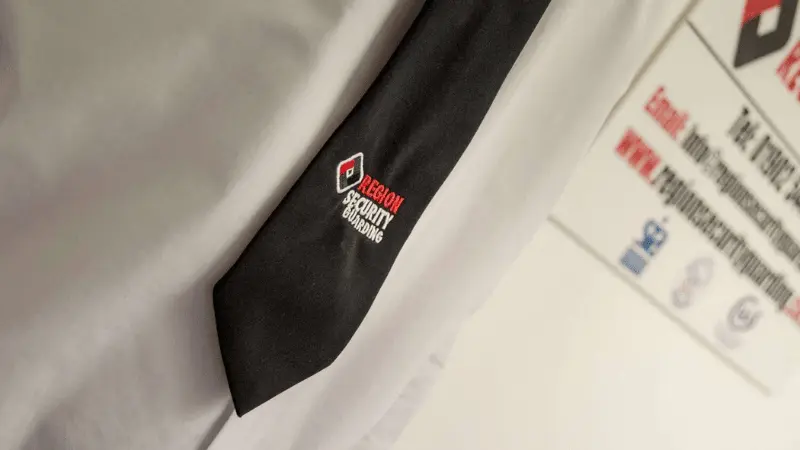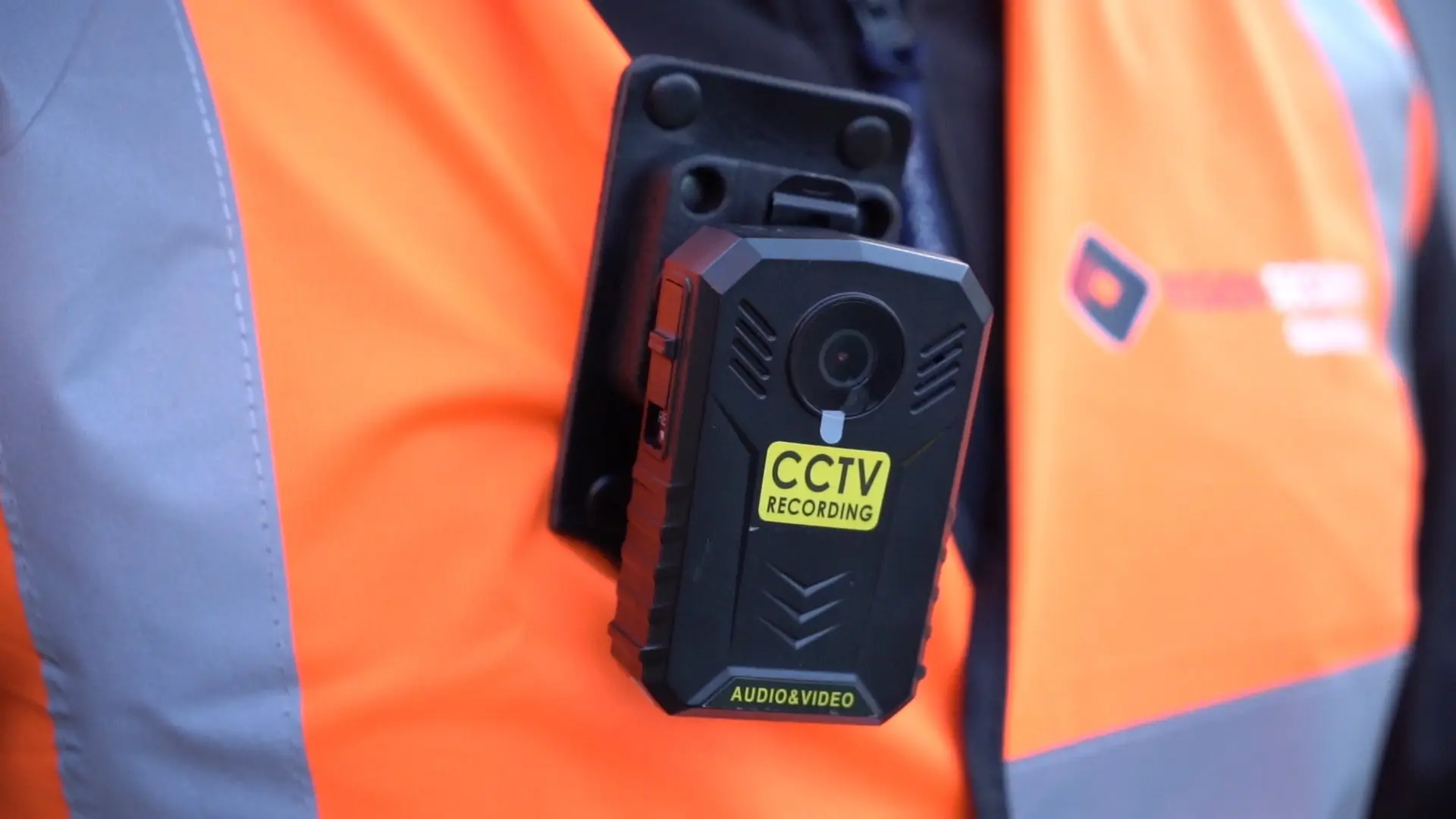Contents:
Construction sites are often vulnerable to a variety of security risks, like crime and other health hazards. Because of these factors, it is vital to have solid security measures in place. One of the first steps any construction site manager or security company should take when trying to protect a site is to conduct a construction risk assessment. This helps to assess the initial safety of the site and provides insight as to what needs improving.
But what is included in a risk assessment in construction? How do you go about writing one? In this article, we will be covering those topics and more.
What Is The Purpose Of A Risk Assessment In Construction?
Primarily, construction site risk assessments are for assessing how secure a site really is. Many site owners and managers will use them as additional layers of protection. They play a crucial part for construction businesses, as it allows them to understand how safe their site is. Additionally, it lets them know what they need to do to improve areas on their site that may be vulnerable. Construction risk assessments also give site managers the ability to review past and current security measures in place. This gives them the ability to mull over new action plans that they can use to prevent potential risks.
What Is A Construction Risk Assessment?
Construction risk assessments are just like any other risk assessment. They’re simply tailored for a construction site space instead of any other industry. Generally, they are a fantastic way to improve the overall safety of a site, alerting managers to potential on-site hazards. With the risks identified, it then makes way for brainstorming on how to solve and reduce potential threats more efficiently. They are a cheap and reliable foundation for assessing the state of your site and seeing what steps need to be taken next.

Who Carries Out Risk Assessments In Construction?
On the government website, they mention that construction risk assessments must be carried out by the employers.
Generally, construction site owners will conduct risk assessments on the overall health and safety of their site. They then review which elements could put their workers or visitors at risk.
Security companies that have been hired to provide construction security will often conduct additional risk assessments. These assessments are used to review any potential hazards a site can face, and which areas are the most vulnerable to crime. A security guard or manager is often sent out to conduct the construction risk assessment.
How To Write A Construction Site Risk Assessment?
When constructing your own risk assessment for your site, there are a variety of different factors you need to think about. Below, we go over some of these sections.
What Hazards Threaten The Site?
One of the first factors to consider when writing your construction risk assessment is which hazards prove a threat to your site. For this section, consider a list of the potential security risks and threats that can jeopardise the well-being of your workers. This isn’t strictly limited to crimes and can include accidents that cause injury. For example, falling objects, working from great heights or moving heavy and dangerous objects. Weather conditions can also be something to consider when writing up your risk assessment.
Consider the following:
- Which areas of the site are unsafe?
- Are there any areas that could use more protection?
- Which areas have had accidents happen in them?
- Is there dangerous machinery on my site?
- Are there harmful substances on my site?
- How do people work on-site?
- How experienced are site employees?

How Likely Are The Hazards To Happen?
After considering the possible hazards that can occur on-site, it is then important to think about the chances of it happening. Whilst scales for risk likelihood aren’t set in stone, they tend to follow a general trend. For example:
- The risk is highly likely.
- The risk is likely.
- The risk is possible.
- The risk is unlikely.
- The risk is highly unlikely.
- The chances of this risk happening are impossible.
When put into use, they can look something like this; adverse weather is unlikely, but tripping on uneven ground is highly likely.
How Serious Is This Hazard?
Once you have thought about the chances of each hazard happening, you then need to think about how severe the risk could be. All health and safety hazards or security threats will have different effects that range in severity. And again, whilst there is no exact scale for risk seriousness, there is a general trend. For example:
- Maximum severity.
- High severity.
- Medium severity.
- Low severity.
- Minimal severity.
- No severity.
When used, the results can look something like this; falling from a great height can be highly severe, as it can result in broken bones or other bad injuries. On the other hand, tripping over is minimal severity, as it’s likely it will only result in a graze on the skin.
Who Is At Risk Because Of This Hazard?
Next, you need to think about who could be put at risk in the event of a security hazard. This includes site staff, visitors to the site and any machinery as well. This factor can have an impact on the next section. This is because the experience of the person who may be affected by the hazard can reduce the chances of it happening.
What Is The Overall Risk Rating For Each Hazard?
With the likelihood and severity of the dangers, and who is at risk from the hazards, you can calculate the overall risk rating for each danger. To get an estimated risk rating, consider the experience of on-site workers or visitors. Once you’ve estimated that, think about the likelihood of incidents and the severity of the hazard if the people were affected by it. These factors come together to create the general risk rating. To give you an idea of what it would look like in a risk assessment, here is an example:
A heavy object falling can put everyone at risk, including machines. If hits someone, it can cause considerable, if not severe, damage. However, it is unlikely for a heavy object to fall in the first place if it is properly secured.
On the other hand, tripping over something like equipment cables can put staff and visitors at risk. If someone trips, they will likely only be grazed. Due to the nature of construction sites, it is an almost unavoidable risk.
Lastly, if you’re writing your own risk assessment, you must explain how your risk ratings are calculated.

How Can You Stop Or Prevent The Hazard?
With all the hazard identification and severity calculations out of the way, you then need to think about how to prevent each hazard. In the section, you should write about the measures you will take to stop the hazards from happening or prevent them where you can’t stop them. You should also mention your own security systems that are already in place to help solve the issues.
Has The Hazard Been Fixed?
The last section in your construction site risk assessment is short and sweet. You simply need to write about whether the dangers have been fixed or not. You can also mention whether the risks have had an impact or not, and who has been affected by them if they have.
Review
Once a risk assessment has been done, it isn’t truly over until the project is. You will need to regularly review your site and keep updating the risk assessment accordingly. This ensures you are keeping on top of potential hazards, old and new, and actively taking steps towards fixing them.
Example of a Construction Site Risk Assessment:
EXAMPLE Construction Risk Assessment – Region Security Guarding
What Should Be Included In A Site-Specific Risk Assessment In Construction?
Site-specific risk assessments are risk assessments that are specifically written for a construction site or project. These assessments are usually only one to two pages long.
In general, construction risk assessments will assess multiple sites and may include a range of basic questions that require answering. Site-specific risk assessments will only require information that is relevant to the site being evaluated. Details included in the site-specific assessment include, but are not limited to:
- Date or time of the project.
- Who is at risk during the project.
- Potential hazards that can threaten the site.

So, How To Write A Construction Risk Assessment?
In this article, we have gone over what a risk assessment in construction is, how to write one, and what the purpose of it is. We also briefly touched on what a site-specific risk assessment is, and what it typically involves.
To keep up to date with the latest construction news, check out our news page. There, you can find the top 6 construction site theft prevention tips.
If you want more than just articles, we also have a Region Security YouTube channel, where we cover all the latest security news, tips and tricks.
Let’s Stay In Touch
Want to stay updated with our latest content? Enter your email address to subscribe to our free newsletter.
Related Articles
No Results Found
The page you requested could not be found. Try refining your search, or use the navigation above to locate the post.




